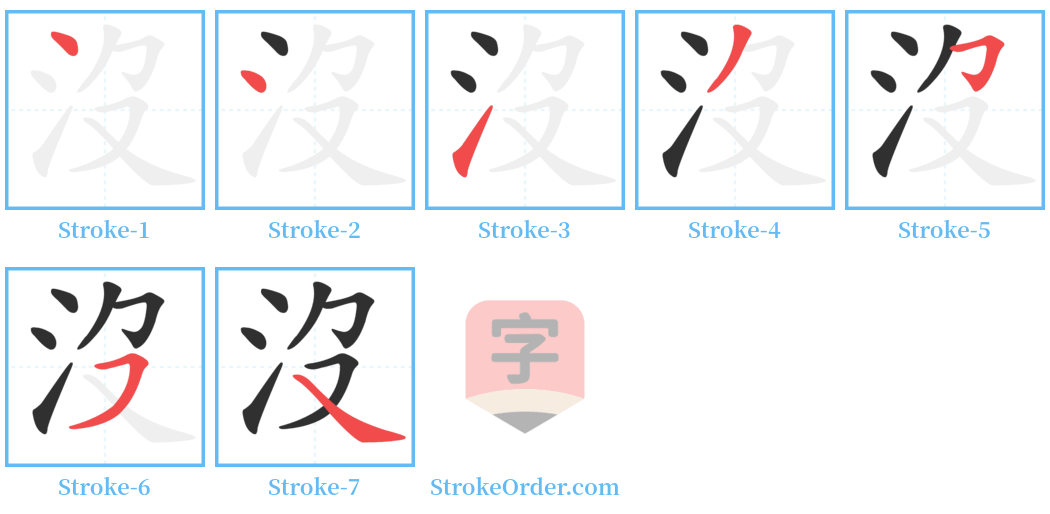沒 Stroke Order
Animated Stroke Order of 沒

Stroke Order Diagrams for 沒

Step-by-Step Handwriting Guide for 沒

Learn to Write Chinese Characters with Video Tutorials
Watch the video of writing the Chinese character "沒", learn the correct stroke order (笔顺) of the character "沒", and master the standard way of writing the character "沒".
Free Printable Handwriting Practice with Stroke Order: 沒
Printable Writing Practice Worksheet of "沒" in Portrait Orientation (Tian Zi Ge)

Printable Writing Practice Worksheet of "沒" in Landscape Orientation (Tian Zi Ge)

Information of 沒
Pinyin
mò、 méi
Radical
氵
Strokes
7 strokes
Usage
★★★
Definition
(negative prefix for verbs) / have not / not, drowned / to end / to die / to inundate
没 [méi]
(1) Verb
1. Not to have; to lack; to not exist (En: be without; have not; there isn't)
2. Inferior to; not as good as (En: not as good as; inferior to).
(2) Adverb
1. No; not; not at all (En: not, no)
2. Used before verbs or adjectives to indicate the negation of past actions, behaviors, or states.
3. Used at the end of a choice question to represent the negation aspect of the selection question.
Indicates negation of having or existing. Example words: 没缘 (no relation), 没钱 (no money).
Indicates negation of something that was or has already happened. Example words: 没来 (did not come), 没说 (did not say).
Inferior to something. Example: 我没他有学问 (I am not as knowledgeable as him).
Indicates insufficiency or incompleteness. Example: 他只来了一下,没五分钟就走了 (He only came for a little while, and left in less than five minutes).
没 [mò]
(1) Verb
1. To submerge; to drown (En: submerge; drown)
2. To dive (En: dive)
3. To disappear; to be hidden (En: disappear)
4. To be destroyed; to perish (En: destroy)
5. To indulge in; to be confused (En: indulge in)
6. To confiscate (En: confiscate)
7. To die (also pronounced as "歿") (En: die)
8. To fall into (En: fall)
9. To conceal; to hide under cover (En: conceal; hide under cover)
(2) Adverb
1. Indicates negation, equivalent to “莫” or “不” (En: not)
2. Never; not at all (En: never)
(3) Adjective
1. Regional: full (En: full)
2. Complete; entire (En: all)
例: 没水而死 (died from drowning in water); 没世 (for a lifetime); 没后 (eventual; final).
*Related phrases include: 沉没 (to submerge), 淹没 (to inundate), 没人 (a person familiar with diving), and further references to context and examples have been documented.*